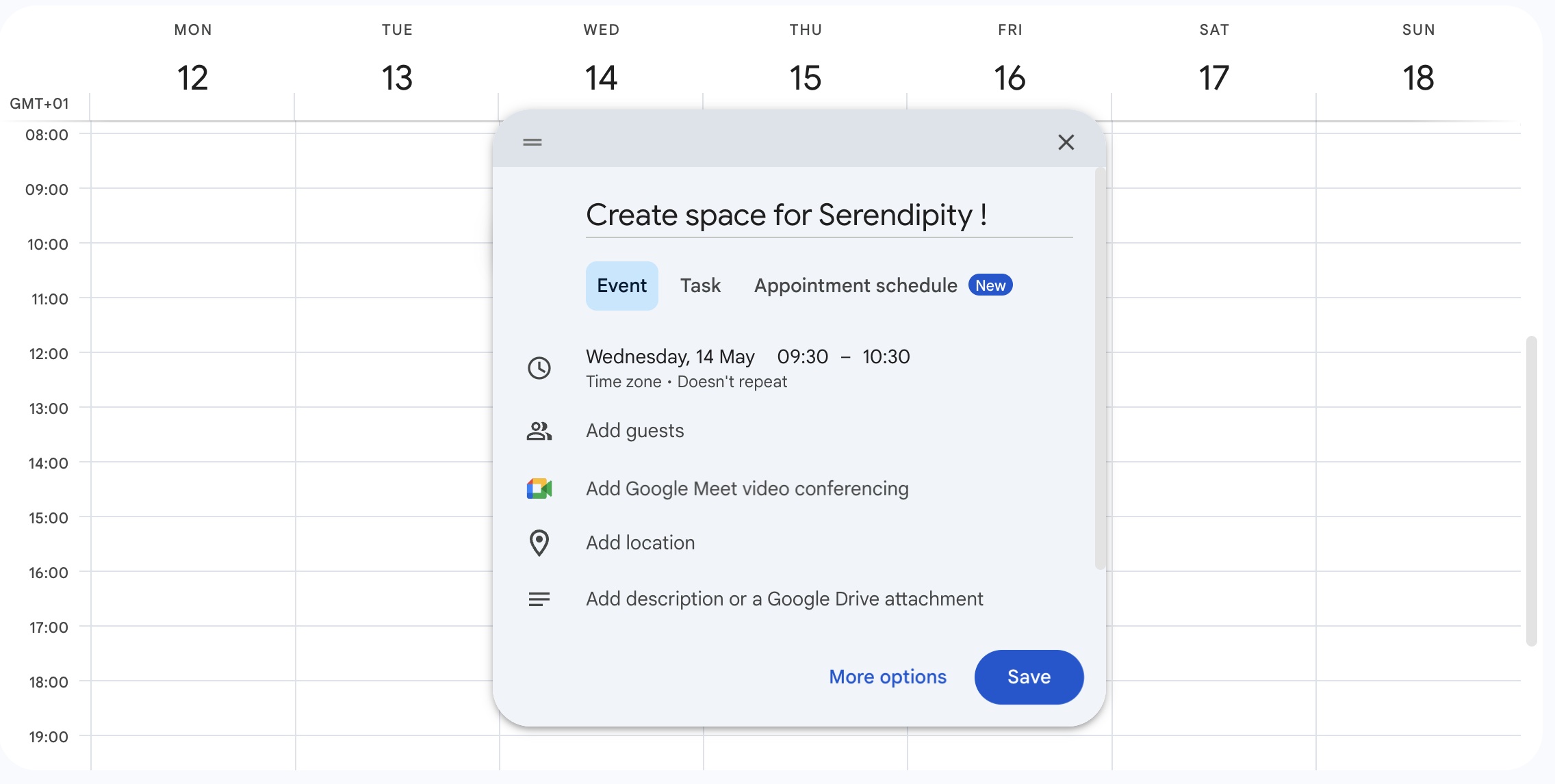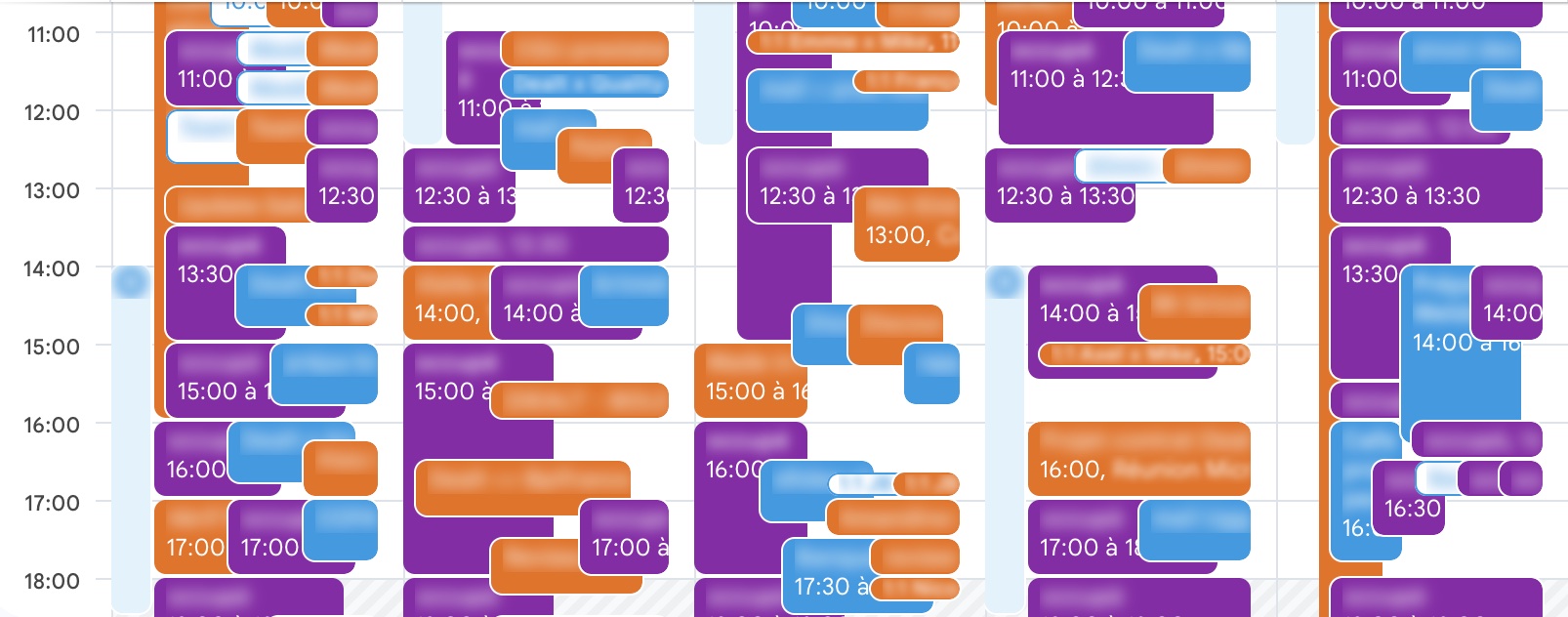
Making space for serendipity in the workplace
How to foster team creativity and collaboration in a busy work week
Serendipity is the art of making happy and unexpected discoveries.
It is a powerful lever for creating value in the workplace. These spontaneous moments of interaction often lead to groundbreaking ideas and innovative solutions. When barriers between teams are removed, knowledge sharing accelerates, and collaboration flourishes.
Imagine a marketing team member meeting a developer by the coffee machine. A simple conversation between them could lead to a new product feature or an impactful marketing campaign. These interactions are not just idea generators; they also strengthen bonds between colleagues, increasing cohesion and engagement.
Serendipity can generate immense value, but it must be deliberately integrated into a company’s culture to unlock its full potential.
Yet, amidst the daily grind, finding time for such exchanges often seems impossible. Meetings, urgent tasks, deep work—everything seems to conspire to keep us from these enriching conversations. But this doesn’t have to be the case. With a few deliberate changes, you can open the door to serendipity.
The juggle of competing priorities
Workweeks are divided between meetings, unexpected urgencies, deep work sessions, and administrative tasks. While all of these are essential, their accumulation can stifle creativity and overwhelm teams.
- Planned meetings are vital to align your team but often dominate your schedule.
- Unexpected urgencies tend to disrupt plans and become the sole focus of the day.
- Deep work sessions are crucial for advancing major projects but are difficult to fit into already packed agendas.
- Administrative tasks are necessary to keep the machine running but are often time-consuming.
- Continuous learning and monitoring (hello LinkedIn doomscrolling) are essential to staying at the forefront but increasingly time-intensive.
As a result, time for spontaneous conversations shrinks to almost nothing. If this time isn’t protected, it disappears altogether when workloads increase. Finding ways to preserve and incorporate serendipitous moments into the workweek is key.
Why serendipity matters
These unplanned moments are more than just pleasant breaks. They are the fuel for creativity and collaboration.
- They spark new ideas. A simple conversation can ignite a groundbreaking idea.
- They build relationships. Connecting with a colleague fosters trust and makes collaboration easier.
- They encourage collaboration. The more you talk, the more opportunities you find to work together.
- They boost morale. Breaking out of the routine to chat can re-energize the team and improve the atmosphere.
Serendipitous exchanges break down silos, stimulate creativity, and enhance productivity. But how can you make space for them in an already packed schedule?
How to make room for serendipity
- Schedule “serendipity time.” Dedicate time slots for “coffee chats” or “walk-and-talks” with colleagues.
- Connect with the right people—or anyone. Take these moments to meet different people across teams.
- Prioritize communication and collaboration. Make them a focus, and spontaneous conversations will naturally follow.
- Identify key conversation topics. Discussions that foster stronger relationships and spark ideas are the most impactful.
However, organizing such interactions for all team members can feel daunting. For larger teams, manually scheduling conversations between everyone is time-consuming and challenging, especially if you want to avoid overloading calendars or ensure everyone has an equal chance to connect.

Unlocking serendipity: how Serendly helps your team thrive
Making space for these conversations is crucial for fueling creativity and boosting organizational performance. However, manually organizing these exchanges can become a logistical nightmare.
This is where Serendly comes in.
By introducing Serendly into your routine, you can turn serendipitous exchanges into a habit, fostering your team’s creativity and performance.
Serendipity isn’t a luxury—it’s a necessity. Let’s make room for it, together.



